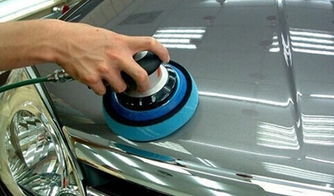Qingyuan Automobile Repair Paint Manufacturer Tells You What Are Wet Polishing and Dry Polishing
During the process of using the car body, there are inevitably unpredictable paint film problems such as bumps and scratches in the car paint, so it is inevitable to modify the car body paint. The polishing treatment of car paint is a preparatory task before modification, which can be divided into three types: manual polishing, wet polishing, and dry polishing. The manual polishing here is very simple and will not be introduced in detail here.
The benefits of wet and dry grinding under equal construction conditions: dust-free, less environmental pollution, finer grinding, and higher grinding efficiency. Wet polishing should first immerse the sandpaper in water for 30 minutes. Assuming that the conditions permit, it is recommended to use pure water such as deionized water to avoid impurities in the water from scratching the paint film. Place polishing blocks on sandpaper for slightly larger areas, making the polishing smoother and avoiding unevenness. During the polishing process, use a wet sponge to clean the polishing slurry while polishing, and provide a certain amount of moisture for the polishing. After polishing, clean the polished surface with a damp sponge, and then blow out the gaps and grooves with compressed air.

Dry polishing is often done using machines for convenience. First, use a 24 or 36 # coarse sand wheel disc to remove the outer coating; Use 50 # grinding wheel to eliminate scratches on the steel plate; Afterwards, use 100~120 # grinding wheels to polish, and operate in this order to improve the grinding efficiency and reduce the amount of filling and leveling work. The bottom layer polishing generally involves a large amount of work, and a polishing machine is often used for large-scale polishing of old paint in areas with flat surfaces and low curvature. However, dry grinding has a high dust content and requires ventilation equipment. Operators need to wear breathing masks. Machine polishing can be done using a bias polishing machine with sandpaper sheets.
Article source: Qingyuan Automotive Repair Paint http://www.jinliangxincai.com/
-
08-25
Common problems with automotive repair paint
Why are the orange lines on the surface of the varnish so heavy after each spray? Why on earth? How can we prevent a decrease?Answer: The thinness of the varnish, the amount of paint produced by the s
-
06-05
The car repair paint manufacturer told you about the problem with water-based coatings
1. How long does it take for a skilled paint coating technician to master the operation of water paint?Generally, practice and understanding with less than half a sound can be mastered, and proficienc
-
05-31
Qingyuan Automobile Repair Paint Company tells you the steps for painting
Automotive Painting Process(1) Rust prevention and internal painting of the vehicle body: Depending on the condition of the vehicle body, it will be completed by a sheet metal worker.(2) Polishing and
-
05-12
Why does car repair paint lack luster?
If there is a lack of gloss on the surface of the originally flat and smooth car paint surface, especially during the process of car paint care, it can be observed under a microscope that the surface
